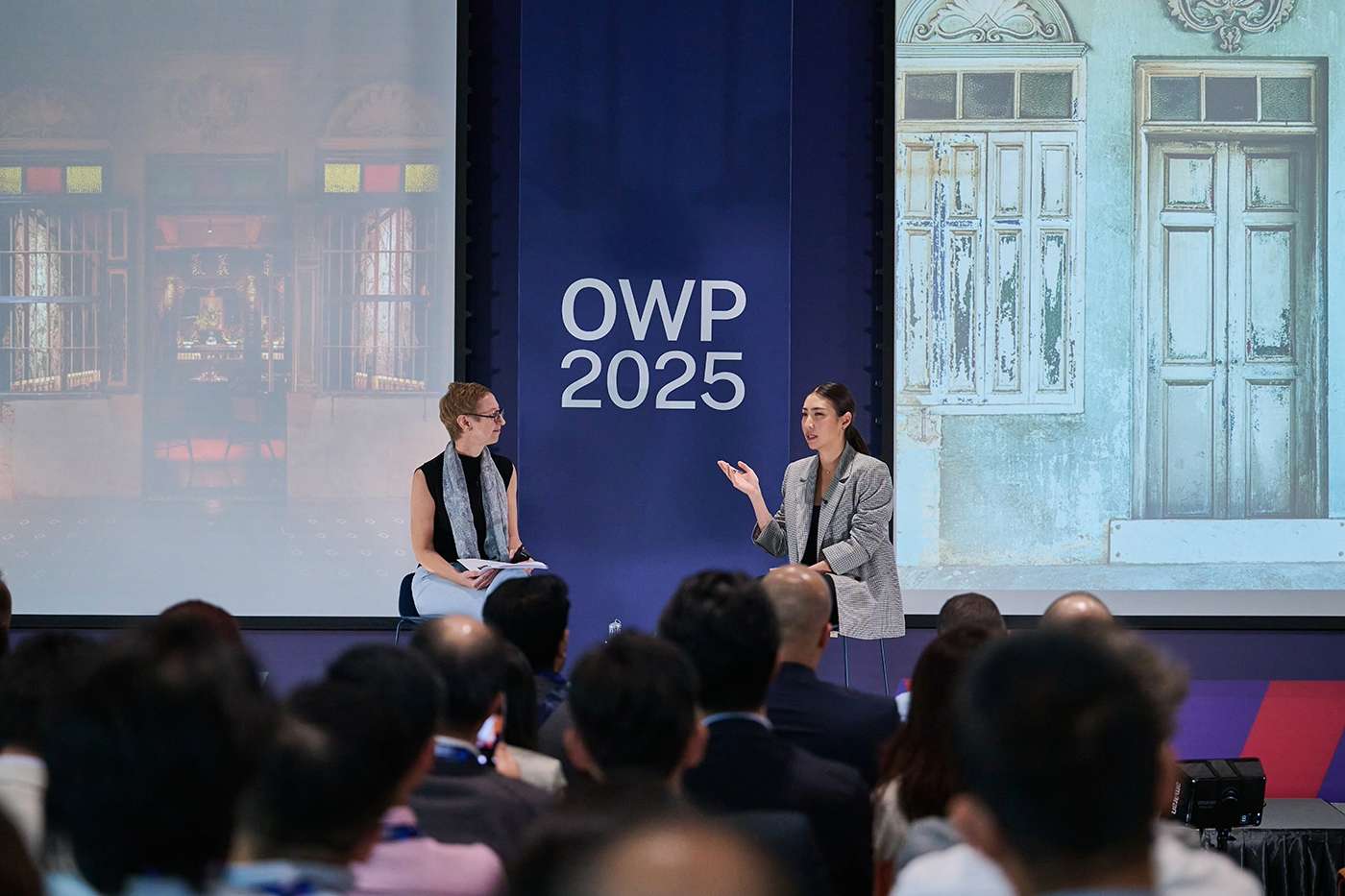
How companies and talent can gain from a shared purpose
Why is purpose so important for organizations? Why should more leaders take it seriously? How can we align our personal purpose with work?
Some argue that the main driver behind the rise of purpose comes from pressure from external stakeholders including consumers, governments and investors.
But employees are just as important as a motivational force. An organization that embraces a genuine, clear purpose rooted in a societal need can unleash higher performance and engagement because employees connect on a personal level with the business.
“There is a recognition that placing purpose at the centre of the enterprise and defining it with reference to the needs of society is increasingly something that leaders are embracing,” said Bach, who is also Professor of Strategy and Political Economy, during a co-hosted OWP liVe session with Meister titled “Purpose – Is the hype justified?”

Research shows that companies with a strong purpose perform better on the stock market. A study of 20,000 employees showed that when leaders are clear about purpose, employees are about 100% more likely to stay in the organization.
The importance of purpose has only grown during the COVID-19 pandemic: nearly two-thirds of US-based workers surveyed said the pandemic had caused them to reflect on their purpose.
Why personal purpose matters
Purpose is personal, Meister explained; it’s “the intersection between what you love, what you are good at and how you can contribute to society or the world”.
If you connect with your work on that personal level, you are naturally more engaged and motivated. While young talent used to want to work for a big brand, younger generations now look for employers that fit with their values.
“They want to work for an organization that cares, that has some kind of social impact,” she said. “If you want the best talent, you need to make sure you invest in what drives and motivates them, or else they will leave.”
However, research shows that while 85% of executives feel they can live their purpose in their day-to-day work, the same proportion of frontline managers and employees is either unsure or say they can’t do the same.
There appears to be a purpose deficit in the workplace. So how can leaders improve their organization’s approach to purpose?
It starts at an individual level.
The three types of purpose for employees
Meister outlined three typical ways that individuals can connect to their purpose in the world of work.
- Through the work they do
The work that an employee does on a day-to-day basis is aligned to their own sense of purpose. Their identity, values and motives connect with the organization’s sense of purpose.
- Through their work community
A role’s actual tasks may not match a person’s purpose, but they can still find purpose at work. Maybe the job is not what inspires the person, but it’s in the way they frame their function, role or relationships at work.
3. Enabled by work
If a person is not in an environment that supports their purpose at all, their employer can still be the enabler, by providing the employee with the fuel to realize their purpose outside of work.
Building a purpose-driven organization
From an organizational perspective, there are some simple steps that executives can take to make a bigger impact with purpose and to attract and retain more talent.
Bach cited the example of clothing company Patagonia, which has used its website to tell people not to vote for climate change deniers in US elections.
“If you think about why a company would do such a thing, if their purpose is to save the planet – this might make a lot more sense,” he said. “The people that go to work at Patagonia are passionate about the environment, public lands and using business to drive positive change.”
The ways organizations tend to approach purpose can be organized into three camps.
- No clearly defined organizational purpose
The organization has not established or articulated its purpose. This makes it tough for employees to connect with their work on a personal level.
2. Clear organizational purpose not defined around pressing societal needs
The organization has a strong purpose that is well communicated, but it is not focused on positive impact. This approach can motivate employees, but it may prove difficult for talent to truly feel inspired on a personal level.
3. Clear organizational purpose defined around pressing societal needs
This approach can attract and retain talent that feels a deep connection and alignment with the organization, while also creating a highly motivated atmosphere.
“We start businesses for a reason – they have a purpose, there is a need. If that need is formulated around societal needs, engages the employees and taps into their own personal purpose, greater performance follows,” Bach said.
How leaders can get purpose right
Meister and Bach offered four key points for leaders seeking to better align their corporate purpose with the personal values of today’s talent.
Discover your own sense of purpose
What inspires and motivates you? Are you aligned with your organization’s purpose?
Connect to your team members’ sense of purpose
Know what drives your team and why they are here. Let them see that you are motivated by purpose too.
Elevate your organization’s purpose
Think outside of your sphere of influence. Why does the organization exist?
Align across dimensions to unlock meaning and performance
Embed purpose throughout your organization and communicate it to all stakeholders, so that your teams feel part of something bigger.
Research Information & Knowledge Hub for additional information on IMD publications

Leaders at the WEF’s Annual Meetings of the Global Future Councils and Cybersecurity focused less on rivalry and more on action.

Chef Pam shares how creativity, connection, and simplicity can transform pressure into possibility and legacy into a philosophy of leadership.

Nothing stunts team progress like “undiscussables.” Left unmanaged, they choke the team’s problem-solving abilities and its capacity to learn and change. In this four-part series, we provide a guide for team leaders to tackle thorny issues, beginn...

Kiran Bedi reveals how fearless leadership built on integrity, discipline, and purpose can turn conviction into trust and service into impact.

Learn how to start Tackling your team’s taboos by addressing the “undiscussables” that block problem-solving, learning, and meaningful team progress.
The case examines how DNB Bank, Norway's largest financial services company, reshaped its growth strategy by focusing on startups and SMEs, a segment traditionally considered unprofitable. In 2013, DNB launched a bold SME strategy, deliberately ch...

A common trap new leaders fall into is the desire to please others. But don’t be fooled: people-pleasing is exhausting and can quickly lead to burnout. Go through the questions below to see if you’re at risk and check out the tips on breaking the ...

Poman Lo argues that purpose-driven leadership, not profit, must guide Asia’s transformation toward sustainability amid the growing climate crisis.

New leaders, beware: the urge to please everyone can lead to exhaustion and burnout. Learn how to spot the signs and Don’t become a people pleaser.

Las estrategias de economía circular y regeneración están transformando el crecimiento empresarial frente al cambio climático, la escasez de recursos y la tensión geopolítica, dentro de los límites del planeta.
Research Information & Knowledge Hub for additional information on IMD publications
Research Information & Knowledge Hub for additional information on IMD publications
Research Information & Knowledge Hub for additional information on IMD publications
in I by IMD
Research Information & Knowledge Hub for additional information on IMD publications
Research Information & Knowledge Hub for additional information on IMD publications
Research Information & Knowledge Hub for additional information on IMD publications
in I by IMD Brain Circuits 15 October 2025
Research Information & Knowledge Hub for additional information on IMD publications
in I by IMD
Research Information & Knowledge Hub for additional information on IMD publications
in I by IMD
Research Information & Knowledge Hub for additional information on IMD publications
in I by IMD
Research Information & Knowledge Hub for additional information on IMD publications

